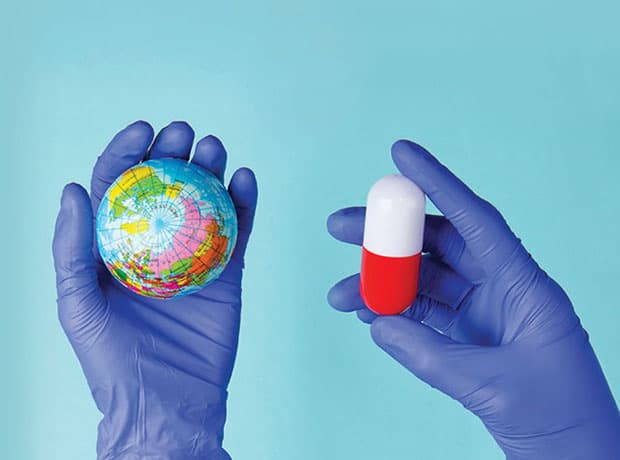Chemistry is the cornerstone of modern civilisation, playing a crucial role in virtually every aspect of our lives.
From the food we eat and the water we drink to the medicines which save lives and the clothes we wear; the impact of chemistry is omnipresent.
However, this influence does come with a significant environmental cost. Industries, including pharmaceuticals, are a major consumer of water and energy, raising questions over how we can reconcile the benefits with the urgent need to meet global climate targets.
The environmental footprint is substantial. Water and energy are critical resources in the production of chemical products, and their extensive use contributes to pollution and greenhouse gas emissions.
The challenge is to maintain the significant benefits while mitigating its adverse environmental effects.
Transformers
To address these challenges, scientific research must undergo a significant transformation.
Adopting sustainable technologies can be achieved on any scale, from comprehensive overhauls of complete laboratory setups to the gradual replacement of individual pieces of equipment.
Modern, energy-efficient electrical equipment can significantly reduce the environmental impact of laboratory operations.
For instance, the combination of an energy-efficient hotplate stirrer with oil-free heating blocks provides a sustainable alternative to traditional heating mantles and oil baths in laboratories, providing precise temperature control and improved reaction visibility while reducing electricity consumption and negating the need for oil disposal.
Water conservation is another critical aspect of sustainable laboratory practices. Implementing technologies like waterless condensers and recirculating chiller systems helps minimise water consumption by eliminating the need for constant water flow in experiments and substantially cuts down water usage.
Additionally, optimising processes to reduce water usage during experiments and cleaning procedures is essential for sustainable water management.
By integrating these innovations into operations, laboratories across the globe can achieve greater efficiency and sustainability without compromising the quality of their research and development activities.
Future proofing
In a more broad context, the shift towards sustainable chemistry practices aligns with global efforts to address climate change and resource conservation.
Governments and international organisations are setting ambitious targets for carbon reduction and environmental sustainability.
By adopting and promoting sustainable technologies, the chemistry research sector can play a pivotal role in achieving these goals and driving global progress towards a more sustainable future.
Collaboration among educational institutions, industry leaders, and policymakers is essential to sharing best practices, developing innovative solutions, and advocating for supportive policies that facilitate widespread adoption of sustainable practices.
Engaging students and young professionals with innovative and sustainable technologies is crucial for driving long-term change.
This can be maintained by educating students on green chemistry principles and sustainable laboratory techniques which will ensure that future professionals are equipped with the knowledge and skills to prioritise sustainability throughout their careers.
Hands-on learning experiences with energy-efficient equipment and sustainable technologies further reinforce these principles, fostering practical skills and a commitment to sustainable practices.
Green party
Schools and universities are increasingly recognising the importance of sustainability in their operations across the board.
This includes the laboratory setting, where energy-efficient devices and water-saving technologies are becoming readily available.
As manufacturers, we know there is a key focus on catering specifically to the educational sector through offering solutions which align with both educational needs and environmental goals.
Numerous sustainable alternatives are designed to be compatible with standard laboratory procedures and equipment, ensuring minimal disruption to ongoing educational activities while enabling institutions to reap the benefits of reduced energy consumption, lower water usage, and decreased maintenance costs over time.
College rules
Rotherham College recently introduced a waterless air condenser and distillation adapter, when the college realised their Liebig water condensers were no longer compliant with the Water Supply Regulations.
They saw it as the ideal opportunity to consider their water sustainability. The condensers allowed the college to comply with the regulations and enabled them to significantly reduce their water usage in science.
The simple set-up eliminated the risk of flooding, connecting the water supply to the wrong inlet on the condenser, or forgetting to start the water flow, making it a safer option for their students, and giving them more flexibility on which lab to use.
Overall, by implementing greener strategies and fostering a culture of sustainability, chemistry industries can make significant strides towards reducing their environmental footprint in laboratory practices and educational settings.
Embracing energy-efficient technologies, promoting green chemistry principles, and educating future professionals on sustainable practices are essential steps towards building a more sustainable and resilient chemistry sector for the future.
Dr Ffion McKeague is Operations Director at Asynt
